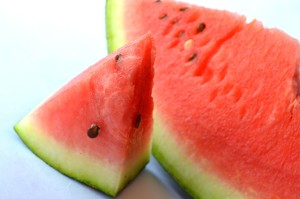We all hear so much about fiber and how we need it in our diets…
But why and how do we get it?
There are also a few different types… So, let us help you to figure this out!
What Is Fiber?
Once considered “roughage” fiber is the part of food that cannot be digested or broken down by the body and passes through the intestines.
If it just passes through, why do we need it, you say? Well, keep reading!
There are two types of fiber: soluble and insoluble.
Soluble Fiber
Soluble fibrous materials thickens and dissolves in water and is key in lowering cholesterol. It is made up of pectin and gums that secrete a gel-like consistency that binds to cholesterol and bile acids in the small intestine to eliminate from the body.
Sources of Insoluble fiber include:
Wheat bran is the most commonly known but the avoidance of wheat is a smart choice in your health.
Fruits, vegetables, grains, nuts and beans are some more sources of fibrous materials to include in your diet.
Below are 5 benefits that a high-fiber diet will provide.
1. Combat Diabetes
 Soluble fiber helps decrease the absorption of carbohydrates and therefore reduce the rise of blood sugar after a meal.
Soluble fiber helps decrease the absorption of carbohydrates and therefore reduce the rise of blood sugar after a meal.
People who consumed fiber had a 27% lower risk of developing type 2 diabetes.
A study published in the Archives Of Internal Medicine, followed a group of 15,000 people aged 35-64 for an average of 7 years. Over the course of this study 844 people developed type 2 diabetes. The results showed that the people who consumed more of it were less likely to develop type 2 diabetes.
2. Hearty Heart Health
Those who eat a high fiber diet have been known to have a 40% lower risk of heart disease.
This study included over 43,000 people aged 40-75 with no incidence of cardiovascular disease. In a 6 year follow up they found that a 10 gram increase in total dietary fiber was strongly associated with a reduced risk of total myocardial infarction.
3. No stroke for you, my friend
Researchers have found that for every seven grams more fibrous materials you consume on a daily basis, your risk for a stroke reduces about 7%.
Studies revealed that high-fiber diet intake is significantly associated with lower risk of first stroke.
4. Dermatological health
 This one may seem a bit weird but fibrous material helps move yeast and fungus out of your body. These things can usually be expelled through the skin causing acne and rashes, so the quicker they are through you, the less likely you may be to encounter these skin conditions.
This one may seem a bit weird but fibrous material helps move yeast and fungus out of your body. These things can usually be expelled through the skin causing acne and rashes, so the quicker they are through you, the less likely you may be to encounter these skin conditions.
Psyllium husk has been seen to be a key source of fibrous material for this situation.
It is also great for your immune system, to keep pushing out these pathogens.
5. Weight Loss
Fibrous materials can help you feel fuller, longer.
Along with water and protein, this makes up the major part of food that helps us feel full. This is ideally why you want to focus your diet on real, whole foods as they contain water, protein and fibrous materials.
Also in the benefit zone, the blood sugar lowering effects of fiber allow you to not have peaks and falls in your blood sugar which can result in cravings which tend to be centered on sugar and carbs.
A high-fiber diet is your way to keep your health in check and mostly on good terms. Although it may be speculated that a high fiber diet may cause stomach problems, if it is in a balanced way, fiber is nature’s way of increasing your lifespan.
P.S: – Want to read more of this stuff? We have loads! Go to Alternative health Concepts and subscribe to our blog (scroll down on the right) for amazing health tips, and don’t forget to leave your valuable feedback!
Source: Alternative Health Concepts
Related Articles and Resources
- What Role Does Diet Play in a Healthy Immune System?
- Thanksgiving: The Power of a Thankful Heart
- Why you need Fiber?
- Challenges and Solutions When Working with Protein and Fiber
- National Fiber Council
- 20 High Fiber diets you need in your daily life
- How fiber affects weight?
- Fiber-diet statistics
- 10 Fruits, Vegetables, Herbs & Foods that Revitalize your Body & Mind



